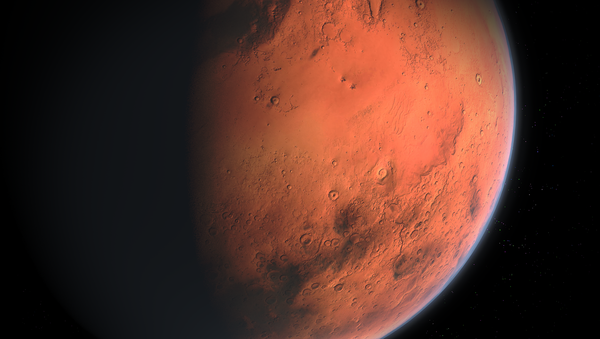A giant dust storm has covered the entire planet of Mars, with dust clouds reaching up to 40 miles high, NASA stated.
"As of Tuesday morning, June 19, the Martian dust storm had grown in size and was officially a 'planet-encircling' (or 'global') dust event. The storm has starkly increased dust at Gale Crater, where NASA's Curiosity rover is studying the storm's effects from the surface," NASA Mars Exploration Rover status report said.
Dust Storm selfie by @MarsCuriosity on a wee planet Mars.
— Seán Doran | Seán Ó Deoráin (@_TheSeaning) 20 июня 2018 г.
282 megapixel version: https://t.co/19xlCSTVuN pic.twitter.com/woio6OMDUH
No signal has been received from NASA's Opportunity rover. The craft has gone into hibernation because its solar panels are incapable of providing or recharging its batteries.
The dust storm which halted the Opportunity rover has gone global. Tau values in the skies over @MarsCuriosity have risen to 8 pic.twitter.com/FVZY04s87o
— Mars Weather (@MarsWxReport) 20 июня 2018 г.
The Curiosity rover, however, is nuclear-powered, so it can offer a chance of answering the question regarding the duration of massive dust storms on Mars.
Dust storm on Mars extending. And there seems to be a new one evolving north of the southern polar cap. Imaged on 20. and 21. June from Germany. CM approx. 75 deg. Scope 123/738 mm, #Televue Powermate 4x, ADC, ASI 290 MC. pic.twitter.com/4GtIdNREeZ
— Sven Melchert (@sven__melchert) 21 июня 2018 г.
READ MORE: Star Gazers Rejoice! Earth's Closest Encounter With Mars in 15 Years
Martian dust storms appear frequently, especially during the planet's spring and summer, when it is closest to the sun, NASA said.
As the atmosphere warms, winds generated at different locations mobilize dust particles the size of talcum powder grains, according to NASA.

